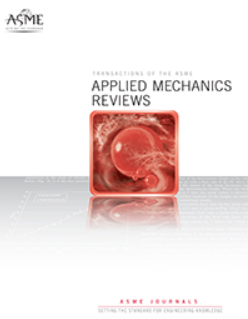Structural Analysis of a Composite Passenger Seat for the Case of an Aircraft Emergency Landing
IF 16.1
1区 工程技术
Q1 MECHANICS
引用次数: 0
Abstract
Aviation authorities require, from aircraft seat manufacturers, specific performance metrics that maximize the occupants’ chances of survival in the case of an emergency landing and allow for the safe evacuation of the aircraft cabin. Therefore, aircraft seats must comply with specific requirements with respect to their structural integrity and potential occupant injuries, which are certified through the conduction of costly, full-scale tests. To reduce certification costs, computer-aided methods such as finite element analysis can simulate and predict the responses of different seat configuration concepts and potentially save time and development costs. This work presents one of the major steps of an aircraft seat development, which is the design and study of preliminary design concepts, whose structural and biomechanical response will determine whether the concept seat model is approved for the next steps of development. More specifically, a three-occupant aircraft seat configuration is studied for crash landing load cases and is subjected to modification iterations from a baseline design to a composite one for its structural performance, its weight reduction and the reduction of forces transmitted to the passengers.飞机紧急降落复合材料座椅结构分析
航空当局要求飞机座椅制造商提供具体的性能指标,以最大限度地提高乘客在紧急降落时的生存机会,并允许安全撤离飞机机舱。因此,飞机座椅必须符合其结构完整性和潜在乘员伤害方面的特定要求,这些要求是通过进行昂贵的全面测试来认证的。为了降低认证成本,有限元分析等计算机辅助方法可以模拟和预测不同座椅配置概念的响应,从而可能节省时间和开发成本。这项工作提出了飞机座椅开发的主要步骤之一,即初步设计概念的设计和研究,其结构和生物力学响应将决定概念座椅模型是否被批准用于下一步的开发。更具体地说,研究了一种三人飞机座椅配置,用于坠机着陆载荷情况,并对其结构性能、重量减轻和传递给乘客的力的减少进行了从基线设计到复合设计的修改迭代。
本文章由计算机程序翻译,如有差异,请以英文原文为准。
求助全文
约1分钟内获得全文
求助全文
来源期刊
CiteScore
28.20
自引率
0.70%
发文量
13
审稿时长
>12 weeks
期刊介绍:
Applied Mechanics Reviews (AMR) is an international review journal that serves as a premier venue for dissemination of material across all subdisciplines of applied mechanics and engineering science, including fluid and solid mechanics, heat transfer, dynamics and vibration, and applications.AMR provides an archival repository for state-of-the-art and retrospective survey articles and reviews of research areas and curricular developments. The journal invites commentary on research and education policy in different countries. The journal also invites original tutorial and educational material in applied mechanics targeting non-specialist audiences, including undergraduate and K-12 students.

 求助内容:
求助内容: 应助结果提醒方式:
应助结果提醒方式:


